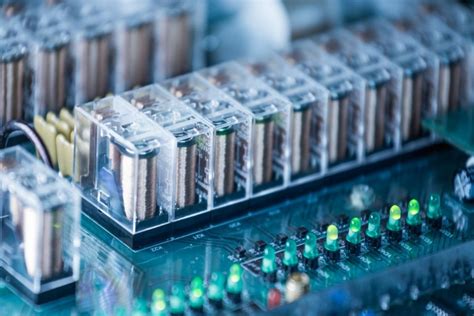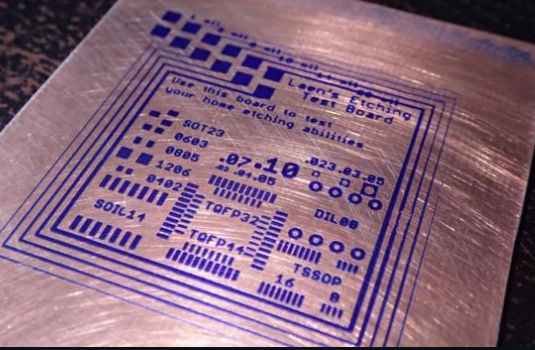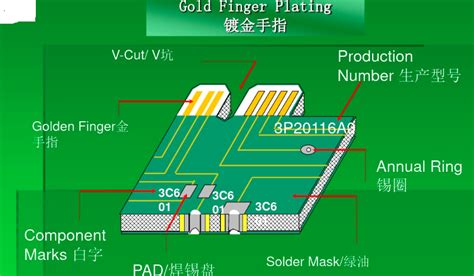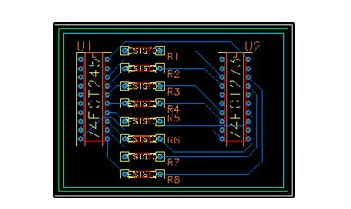Aluminum foil pcb
Advantages Of Using Aluminum Foil In PCB Design
Aluminum foil has emerged as a significant material in the realm of printed circuit board (PCB) design, offering a range of advantages that enhance both the performance and efficiency of electronic devices. As the demand for more compact and powerful electronic devices continues to grow, the need for innovative materials and methods in PCB design becomes increasingly critical. Aluminum foil, with its unique properties, provides several benefits that make it an attractive choice for engineers and designers.
One of the primary advantages of using aluminum foil in PCB design is its excellent thermal conductivity.
In electronic devices, managing heat dissipation is crucial to ensure optimal performance and longevity. Aluminum foil effectively conducts heat away from critical components, reducing the risk of overheating and potential damage. This property is particularly beneficial in high-power applications where efficient thermal management is essential.
By incorporating aluminum foil into the PCB design, engineers can achieve better thermal performance without the need for additional cooling mechanisms, thereby simplifying the overall design and reducing costs.
In addition to its thermal properties, aluminum foil also offers superior electrical conductivity.
This characteristic is vital for maintaining signal integrity and minimizing energy loss in electronic circuits. The high conductivity of aluminum foil ensures that electrical signals are transmitted efficiently across the PCB, which is especially important in high-frequency applications where signal degradation can significantly impact performance.
By using aluminum foil, designers can create PCBs that support faster data transmission and improved overall functionality.
Moreover, aluminum foil is known for its lightweight nature, which is a significant advantage in the design of portable and compact electronic devices.
As consumer electronics continue to shrink in size, the demand for lightweight materials that do not compromise performance is on the rise. Aluminum foil meets this demand by providing a material that is both light and strong, allowing for the development of smaller and more efficient devices. This attribute is particularly beneficial in applications such as smartphones, tablets, and wearable technology, where every gram counts.
Furthermore, aluminum foil is highly resistant to corrosion, which enhances the durability and reliability of PCBs.
In environments where electronic devices are exposed to moisture or other corrosive elements, the use of aluminum foil can significantly extend the lifespan of the device. This resistance to corrosion ensures that the electrical connections remain intact and functional over time, reducing the likelihood of failure and the need for costly repairs or replacements.
Additionally, the cost-effectiveness of aluminum foil makes it an appealing choice for PCB design.
Compared to other materials with similar properties, aluminum foil is relatively inexpensive, making it an economical option for large-scale production. This affordability does not come at the expense of quality, as aluminum foil maintains its performance characteristics even in budget-conscious applications.
In conclusion, the use of aluminum foil in PCB design offers a multitude of advantages that cater to the evolving needs of the electronics industry. Its excellent thermal and electrical conductivity, lightweight nature, corrosion resistance, and cost-effectiveness make it a valuable material for enhancing the performance and reliability of electronic devices. As technology continues to advance, the role of aluminum foil in PCB design is likely to expand, providing innovative solutions to the challenges faced by engineers and designers in the pursuit of more efficient and powerful electronic devices.
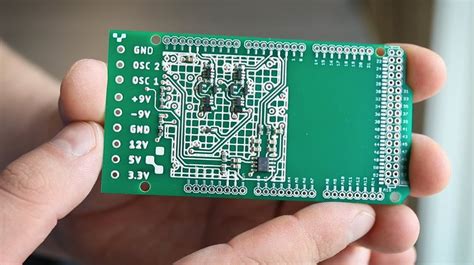
Innovative Applications Of Aluminum Foil PCBs In Modern Electronics
Aluminum foil PCBs, or printed circuit boards, represent a significant advancement in the field of modern electronics, offering a range of innovative applications that are transforming the industry. As technology continues to evolve, the demand for more efficient, cost-effective, and versatile materials has led to the exploration of aluminum foil as a viable alternative to traditional copper in PCB manufacturing. This shift is driven by aluminum’s unique properties, which include excellent thermal conductivity, lightweight nature, and cost-effectiveness, making it an attractive option for various electronic applications.
One of the primary advantages of aluminum foil PCBs is their superior thermal management capabilities.
In high-power applications, such as LED lighting and power electronics, effective heat dissipation is crucial to ensure optimal performance and longevity. Aluminum’s high thermal conductivity allows for efficient heat transfer away from critical components, reducing the risk of overheating and enhancing the overall reliability of the device. This property is particularly beneficial in compact electronic devices, where space constraints make traditional cooling methods less feasible.
Moreover, the lightweight nature of aluminum foil PCBs contributes to the development of portable and wearable electronics.
As consumer demand for smaller, more portable devices continues to grow, manufacturers are increasingly seeking materials that can reduce the overall weight of their products without compromising performance. Aluminum foil PCBs offer a solution by providing a lightweight alternative to copper, enabling the production of thinner and lighter electronic devices. This is particularly advantageous in the design of wearable technology, where comfort and ease of use are paramount.
In addition to thermal management and weight reduction, aluminum foil PCBs also offer cost benefits.
The price of aluminum is generally lower than that of copper, making it a more economical choice for large-scale production. This cost advantage is particularly significant in industries where price competitiveness is crucial, such as consumer electronics and automotive manufacturing. By reducing material costs, manufacturers can offer more affordable products to consumers while maintaining profitability.
Furthermore, aluminum foil PCBs are gaining traction in the field of flexible electronics.
The inherent flexibility of aluminum foil allows for the creation of bendable and foldable circuits, opening up new possibilities for innovative product designs. This flexibility is particularly useful in applications such as flexible displays, foldable smartphones, and wearable health monitoring devices, where traditional rigid PCBs would be unsuitable. The ability to integrate electronic components into flexible substrates not only enhances the functionality of these devices but also expands the potential for creative and ergonomic designs.
Despite these advantages, the adoption of aluminum foil PCBs is not without challenges.
The manufacturing process for aluminum-based PCBs requires specialized techniques and equipment, which can pose initial hurdles for manufacturers transitioning from traditional copper-based processes. Additionally, the electrical conductivity of aluminum is lower than that of copper, necessitating careful design considerations to ensure optimal performance. However, ongoing research and development efforts are addressing these challenges, paving the way for broader adoption of aluminum foil PCBs in the electronics industry.
In conclusion, aluminum foil PCBs represent a promising innovation in modern electronics, offering numerous benefits in terms of thermal management, weight reduction, cost-effectiveness, and flexibility. As technology continues to advance, the unique properties of aluminum foil are likely to drive further exploration and application in various electronic devices, ultimately contributing to the development of more efficient, versatile, and affordable products.

Step-By-Step Guide To Creating Aluminum Foil PCBs At Home
Creating aluminum foil PCBs at home is an innovative and cost-effective method for electronics enthusiasts who wish to prototype their designs without the need for expensive equipment or materials. This process, while unconventional, offers a practical solution for hobbyists and small-scale developers. To begin, gather the necessary materials: aluminum foil, a laser printer, glossy paper, a household iron, a plastic container, and etching solution. Additionally, ensure you have a blank copper-clad board, which will serve as the base for your PCB.
The first step involves designing your circuit layout using PCB design software.
Once your design is complete, print it onto glossy paper using a laser printer. It is crucial to use a laser printer because the toner will later be transferred to the copper board. Ensure that the design is printed in reverse, as this will be transferred directly onto the board. After printing, cut the design to fit the size of your copper board.
Next, prepare the copper board by cleaning it thoroughly with a fine abrasive pad or steel wool.
This step is essential to remove any oxidation and ensure that the toner adheres properly. Once cleaned, place the printed design face down onto the copper board. Using a household iron set to a high temperature, press firmly onto the paper, moving the iron in a circular motion for about five minutes. The heat will transfer the toner from the paper to the copper board, creating a mask for the etching process.
After ironing, allow the board to cool before carefully peeling away the paper.
The toner should remain on the copper, outlining your circuit design. Inspect the board for any gaps or incomplete lines, and use a permanent marker to fill in any imperfections. This step is crucial to ensure that the etching process does not remove any necessary parts of the circuit.
With the design transferred, the next step is to etch the board. Fill a plastic container with an etching solution, such as ferric chloride, and submerge the board.
Gently agitate the container to ensure even exposure to the solution. The etching process can take anywhere from 30 minutes to an hour, depending on the strength of the solution and the thickness of the copper. Monitor the progress closely, and once the unwanted copper is removed, carefully rinse the board with water to stop the etching process.
Following the etching, remove the toner from the board using acetone or a similar solvent.
This will reveal the copper traces that form your circuit. At this stage, inspect the board for any defects or incomplete connections. If necessary, use a soldering iron to make any repairs or adjustments.
Finally, to complete your aluminum foil PCB, drill holes for any through-hole components using a small drill bit. Once drilled, you can solder your components onto the board, following your original design. This step requires precision and patience, as improper soldering can lead to faulty connections.
In conclusion, creating aluminum foil PCBs at home is a rewarding process that combines creativity with technical skill. By following these steps, you can produce functional PCBs for your electronic projects, allowing for rapid prototyping and experimentation. This method not only saves costs but also provides a deeper understanding of the intricacies involved in PCB design and fabrication.
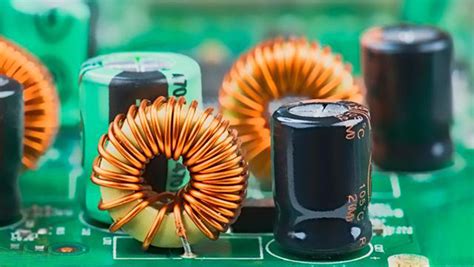
Comparing Aluminum Foil PCBs To Traditional Copper PCBs
In the realm of printed circuit boards (PCBs), the choice of materials plays a crucial role in determining the performance, cost, and application suitability of the final product. Traditionally, copper has been the material of choice for PCBs due to its excellent electrical conductivity and thermal properties. However, recent advancements have introduced aluminum foil as a viable alternative, prompting a comparison between aluminum foil PCBs and traditional copper PCBs.
To begin with, the primary distinction between aluminum foil PCBs and copper PCBs lies in their conductive layers.
Copper PCBs utilize copper as the conductive material, which is renowned for its superior electrical conductivity and thermal management capabilities. This makes copper PCBs highly effective in applications requiring efficient heat dissipation and reliable electrical performance. On the other hand, aluminum foil PCBs employ aluminum as the conductive layer. While aluminum does not match copper in terms of electrical conductivity, it offers other advantages that make it an attractive option for specific applications.
One of the most significant benefits of aluminum foil PCBs is their cost-effectiveness.
Aluminum is more abundant and less expensive than copper, which can lead to reduced manufacturing costs. This cost advantage is particularly beneficial in large-scale production where material expenses can significantly impact the overall budget. Furthermore, aluminum’s lightweight nature contributes to the development of lighter electronic devices, which is a critical consideration in industries such as aerospace and automotive where weight reduction is paramount.
In addition to cost and weight considerations, aluminum foil PCBs offer enhanced thermal performance in certain contexts.
Aluminum has a higher thermal conductivity than many other materials, allowing for efficient heat dissipation. This property is especially advantageous in high-power applications where managing heat is crucial to maintaining device reliability and longevity. Consequently, aluminum foil PCBs are often employed in LED lighting systems, power converters, and other applications where thermal management is a priority.
Despite these advantages, it is essential to acknowledge the limitations of aluminum foil PCBs compared to their copper counterparts.
The lower electrical conductivity of aluminum means that these PCBs may not be suitable for high-frequency applications where signal integrity is critical. Additionally, the mechanical properties of aluminum, such as its softness and susceptibility to oxidation, can pose challenges in certain environments, necessitating protective coatings or treatments to ensure durability.
Moreover, the manufacturing processes for aluminum foil PCBs can differ from those of copper PCBs, requiring specialized techniques and equipment.
This can lead to initial setup costs and a learning curve for manufacturers transitioning from copper to aluminum. However, as technology advances and more manufacturers adopt aluminum foil PCBs, these challenges are likely to diminish over time.
In conclusion, the choice between aluminum foil PCBs and traditional copper PCBs depends on a variety of factors, including cost, weight, thermal performance, and application requirements. While copper remains the preferred choice for many high-performance applications due to its superior electrical properties, aluminum foil PCBs offer a compelling alternative in scenarios where cost, weight, and thermal management are prioritized. As the electronics industry continues to evolve, the adoption of aluminum foil PCBs is expected to grow, driven by ongoing research and development efforts aimed at overcoming existing limitations and unlocking new possibilities.


